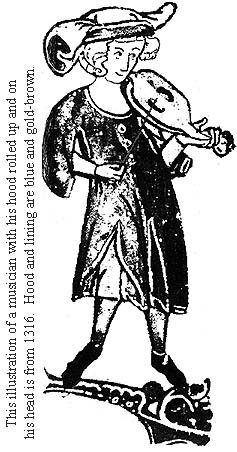 How
to be a HOOD-lum: Medieval hoods
How
to be a HOOD-lum: Medieval hoods How
to be a HOOD-lum: Medieval hoods
How
to be a HOOD-lum: Medieval hoods
Hoods are a particularly useful item of clothing. They
add another layer over the top of the body--head, neck and
shoulders--which
is exceedingly effective in keeping us warm outside, or keeping off the
sun. It seems that most medieval cloaks/capes did not have an
attached hood, instead they were worn with a separate hood like these.
The mere
act of covering your head, even if it's with only one layer of cotton,
will make you a lot warmer on chilly nights, or while you sleep, and it
protects you from that annoying hair-part sunburn during the day. In
addition
to these practical matters, hoods are fun! You can wear them many ways,
you can trim them, you can use them as pockets, you can tie your
friends'
liripipes together, and they are easy and quick to make. Suggested
fabrics:
anything. Well, anything you'd wear to an SCA event. In general, use
woven
natural fabrics, such as cotton, linen or wool. If you find a lovely
fabric
that is scratchy, line it with a softer one. You can trim them with
dags,
bells, "nailheads", beads, etc., and you can "parti"
them, too. If you're not sure what sort of hood you want, or don't
trust your design skills, copy one of the ones in this handout, or from
a medieval illustration.
See the Men's Hats page for more medieval illustrations of hoods.
Hoods, started out as basic, efficient clothing for everyone. They
were worn both "normally," as well as on top of the head as hats. Then
they started mutating, depending on the social class of the wearer, and
as time went on. Although I've used the word "evolution" it seems that
the simpler versions continued in use, even while the more stylish
hoods
where being used by the upper classes, or by middle class folks on
special
occasions.
Basic hoods: not much different than a folded piece of cloth with a seam in the back to make a poncho-like hood. Then they start being fitted at the neck, to reduce bulk, make a better line, and keep them on the head better. Then they finally get way out of hand -- peasant women with liripipes that go to the ankles (not very useful for a working woman), ornate dags on the liripipe and hood skirts, folding them so that the skirts become very ornamental cockscombs when worn as a hat, or wearing them on top of the head with the skirts hanging down behind.

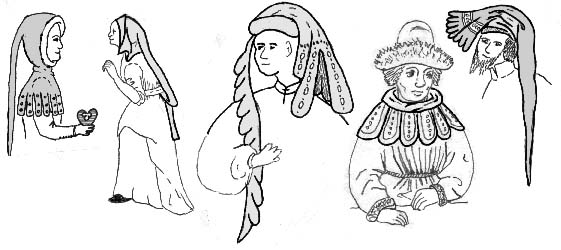
Illustration sources: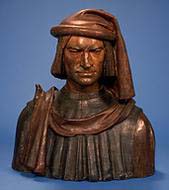
There are lots of ways to achieve the hood shape. Here are two:
Mistress Tangwystyl's, from her period patterns class, and the adapted
version that I tend to use, which is less tailored.
Heather Rose Jones was the first person to put out the word in my
area that patterns and extant items of this sort were in museums.
This news excited me tremendously, and got me started anew with
medieval clothing. This was around 1994.
She notes that this pattern was interpreted from two 14th century English hoods. (Crowford et al pp 190-2) and has been scaled up from the original. She reports that her main innovation was the pattern layout to make best use of the fabric.
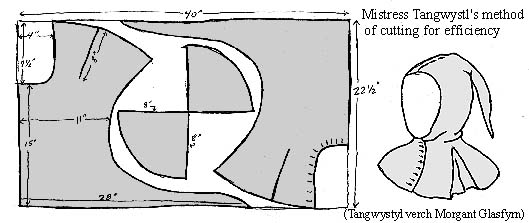
You can make this with a wide neck, sewn shut, so that you won't
have to make buttons & buttonholes, (see first digram) or with a
narrow neck and have some sort of closures which can be left open, or
closed, for a closer fit (second diagram.)
How to measure for your head:
Take measurements of your victim -- one around the widest part of the head (parallel to the ground, like a crown) and also measure the height of the neck from chin to collarbone.
Use one half of the head measurement, plus two inches, to be the dimensions for an imaginary square drawn on folded fabric (see the diagram, measure A.)
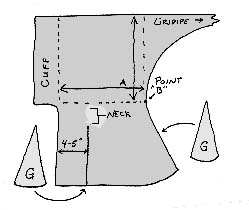
From this central square, extend the square in one direction for the
"cuff" of the face opening (however far you like; 3 inches is a good
start;
longer if you want to wear it rolled up a lot.) If you're making a
single-layer
hood, life is easier if this cuff edge is on the selvedge -- you won't
have to hem it.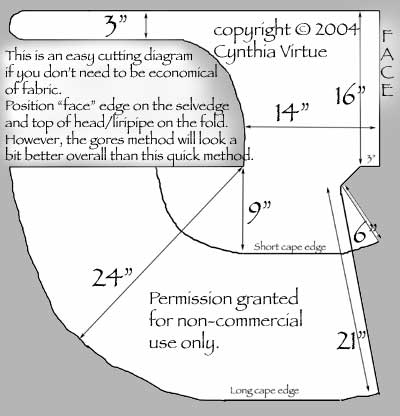
From the lower corner of the square on the cuff side, draw straight down as long as you want the 'skirts' to go.
Do the same for the back edge. You may wish to angle this out slightly for more shoulder room. You will be putting a gore at this seam as well.
From that back-edge lower point of the square, draw a smooth curve upwards to extend into the liripipe.
The other place that gores go is on either side of your neck in the front -- which on this pattern is about 4-5" from the front seam. Cut a slit from the hem upwards.
Finally, cut the gores. My skirts tend to be about 8" long
(plus
the neck dimension) and maybe 4" wide at the end, but the gores need to
be as long as the skirts. Be sure to round them off like pie-pieces.
They
don't need to be very wide -- use scraps.
The larger picture at left is a quick version without gores. It does tend to be less graceful across the front of your chest than if you'd put gores in like the smaller diagram shows. However, there's no reason you couldn't cut it like this and put in gores from the scraps. Note that the large schematic shows two different "cape" sizes. Follow the cutting lines for whichever one you want. The long cape will go down to mid-upper-arm. The measurements are for an Adult Large size; adjust as needed.
Sew one gore each in the front two slits. Additional gore(s) on
the back seam is optional. Add on the liripipe if you have a pieced,
long
liripipe. Sew front neck seam and then seam the back together; finish
the
edge of the skirt and the face opening.
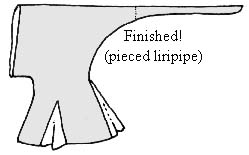
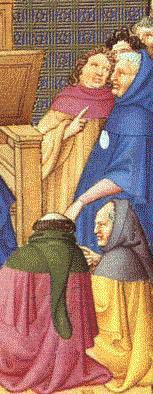
| Article © 1999 and 2005 Cynthia Virtue | Email Author with comments |
| Back to Virtue Ventures Main Page | Back to Article Index |